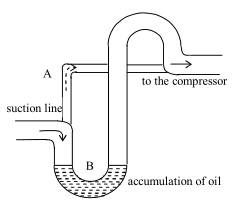问答题
6分
Basically, these units incorporate an evaporating section beneath a condensing or distilling section...
Basically, these units incorporate an evaporating section beneath a condensing or distilling section in a
common vessel of appropriate shape. A controlled flow of filtered feed, taken preferably from a salt
circulating outlet, enters the evaporating section and ascends through a battery of vertical tubes, surrounded
by steam or hot water, vaporizing as it goes, to the condensing section through a labyrinth or screen
(generally called a demister) which ensures that no droplets of salt water enter the condenser with the vapor.
The vapor, directed by suitably placed baffles, passes over the condenser tubes and falls as water to an
outlet duct, from which it is removed by a distillate pump, via a salinometer.
common vessel of appropriate shape. A controlled flow of filtered feed, taken preferably from a salt
circulating outlet, enters the evaporating section and ascends through a battery of vertical tubes, surrounded
by steam or hot water, vaporizing as it goes, to the condensing section through a labyrinth or screen
(generally called a demister) which ensures that no droplets of salt water enter the condenser with the vapor.
The vapor, directed by suitably placed baffles, passes over the condenser tubes and falls as water to an
outlet duct, from which it is removed by a distillate pump, via a salinometer.
参考解析:
1. The main idea of this passage described _______.
A. a boiler
B. a fresh water generator
C. a refrigerator
D. a atmosphere condensing system
2. Which of the following parts is not mentioned?
A. Evaporator
B. Condenser
C. Circulating pump
D. Salinometer
3. The function of a labyrinth or screen _______.
A. directs the vapor flow
B. prevents the droplets through
C. transfer the heat to the feed
D. measures the salinity of distillate water
4. We can infer that _______.
A. the feed passes around the tubes
B. the hot water passes around the tubes
C. the feed flows beneath the hot water
D. the vertical tubes are heated by the battery


 百度扫一扫练题
百度扫一扫练题
 关注千题库公众号
关注千题库公众号








